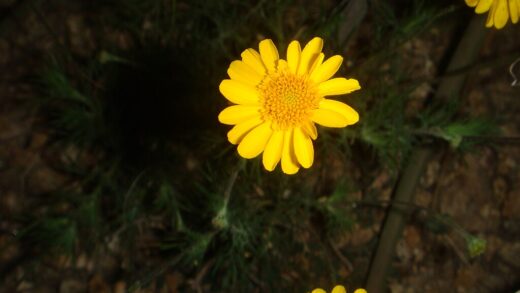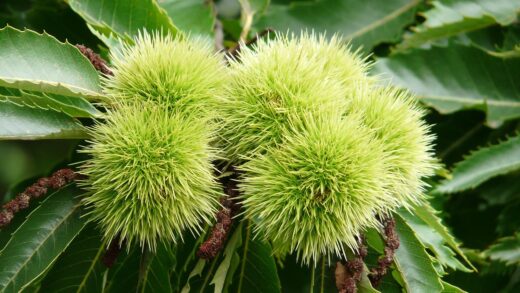Planting and propagation of the Hosta

The process of planting and propagating Hostas is a rewarding endeavor that allows gardeners to expand their collection and create lush, cohesive designs in their shade gardens. Proper planting techniques are crucial for establishing a healthy root system, which is the foundation for a vigorous and long-lasting plant. Equally important is understanding the methods of propagation, primarily through division, which not only yields new plants but also serves to rejuvenate older, overcrowded clumps. By mastering these fundamental skills, you can ensure your Hostas thrive from the moment they are placed in the ground and continue to multiply, filling your garden with their captivating foliage for many years to come. This guide will walk you through the essential steps for successful Hosta planting and propagation.
The optimal time for planting Hostas is during the spring or early autumn, as these seasons provide the ideal combination of moderate temperatures and consistent moisture that encourages strong root development. Spring planting allows the Hosta to establish itself throughout the entire growing season, giving it ample time to build a robust root system before the onset of winter. Autumn planting, performed at least six weeks before the first hard frost, also works well because the soil is still warm, which promotes root growth even as the top growth slows down. Planting during the peak heat of summer should be avoided, as it places significant stress on the plant and requires much more diligent watering to ensure its survival.
When you are ready to plant, whether you have a bare-root specimen or a container-grown Hosta, the preparation of the planting hole is a critical step. The hole should be dug significantly wider than the plant’s root ball, typically at least twice the width, but only as deep as the root ball itself. This wide hole allows you to backfill with amended, loosened soil, giving the roots an easy path to spread outwards into their new environment. Breaking up the sides of the planting hole with your shovel, especially in heavy clay soil, is also important to prevent the hole from acting like a pot, which can restrict root growth and lead to waterlogging issues.
Carefully remove the Hosta from its nursery pot, taking care to handle it by the root ball rather than by its leaves or stems to avoid causing damage. Gently inspect the roots and loosen any that are tightly circling the bottom of the pot, as this will encourage them to grow out into the surrounding soil. Place the plant in the center of the prepared hole, ensuring that the crown, where the leaves emerge from the roots, is positioned at the same level it was in the pot, or just slightly above the level of the surrounding soil. Planting too deeply is one of the most common mistakes and can lead to crown rot, a serious and often fatal condition for the plant.
After positioning the plant correctly, backfill the hole with the amended soil you set aside earlier, gently but firmly tamping it down around the root ball to eliminate any large air pockets. Once the hole is filled, create a shallow basin or “moat” out of soil around the base of the plant to help direct water to the roots during the initial establishment period. Water the newly planted Hosta thoroughly and deeply to settle the soil and provide the roots with essential moisture. Applying a two to three-inch layer of organic mulch, such as shredded bark or compost, around the plant will help conserve soil moisture, regulate soil temperature, and suppress weed growth.
More articles on this topic
Preparing the ideal planting site
Creating the ideal planting site is a foundational step that will have a lasting impact on the health and beauty of your Hostas for their entire lifespan. The process begins with selecting a location that provides the appropriate amount of light, which for most Hosta varieties means filtered or dappled shade, particularly protection from the intense heat and light of the afternoon sun. An area under high-branched deciduous trees or on the north or east side of a structure often provides the perfect conditions. Once you have identified the right spot, the focus must turn to the soil, as Hostas demand a rich, organic, and well-draining medium to truly flourish.
The next step is to clear the chosen area of any weeds, grass, or other competing vegetation that could vie with the Hosta for water, nutrients, and space. It is essential to remove these competitors completely, including their root systems, to prevent them from quickly re-establishing themselves. After the site is cleared, you should assess the existing soil quality. If you are working with heavy clay or compacted soil, it is imperative to improve its structure and drainage. This is achieved by digging in generous amounts of organic matter, such as compost, leaf mold, or aged pine bark fines, working it into the soil to a depth of at least twelve inches.
For gardens with very sandy soil, the challenge is not drainage but rather poor water and nutrient retention. In this case, the addition of organic matter is equally crucial, but for a different reason. Compost, peat moss, and well-rotted manure will act like a sponge, absorbing and holding moisture and nutrients in the root zone where the Hosta can access them. Regardless of your starting soil type, the goal is to create a final soil mixture that is loose, crumbly, and dark in color, indicating a high content of the organic matter that Hostas love. A soil that is rich in organic material will support a healthy population of beneficial microorganisms, which in turn helps to make nutrients more available to the plant.
Finally, before you bring the plants to the site, it is a good practice to determine the final layout of your planting design. Arrange the potted Hostas on the surface of the prepared bed, considering their mature spread to ensure they have adequate space to grow without becoming overcrowded. Proper spacing is vital for promoting good air circulation between plants, which is a key factor in preventing the development and spread of fungal diseases. Once you are satisfied with the arrangement, you can proceed with digging the individual planting holes, confident that you have provided the best possible foundation for your new Hosta garden.
More articles on this topic
The process of division
Division is the primary method for propagating Hostas and is a straightforward process that yields excellent results, providing you with new plants to expand your garden or share with others. The best time to divide Hostas is in the early spring, just as the new shoots, or “eyes,” are beginning to emerge from the ground. At this stage, the leaves have not yet unfurled, making the plant much easier to handle without causing significant damage to the foliage. Dividing in the fall, about six weeks before the ground freezes, is also a viable option, giving the new divisions enough time to establish some roots before winter dormancy.
To begin the process, you will need to carefully lift the entire Hosta clump out of the ground. Start by digging around the perimeter of the plant, well beyond the reach of the leaves, using a sharp spade or garden fork. Once you have encircled the plant, gently work the tool underneath the root ball and lever the entire clump upwards and out of the soil. Hostas have dense, fibrous root systems, so this may require considerable effort, especially for a large, well-established plant. Once the clump is lifted, gently shake or rinse off the excess soil so you can clearly see the crown and the individual growing points.
With the root system exposed, you can now decide where to make your divisions. You are looking for natural separation points in the crown, where the plant is already forming distinct sections. For smaller, younger clumps, you may be able to gently pull the sections apart by hand. For larger, more mature clumps with a tough, woody crown, you will likely need to use a tool to make the cuts. A sharp, sterilized knife, an old serrated bread knife, or the sharp edge of a spade can be used to slice cleanly through the crown, ensuring that each resulting division has at least one, and preferably several, healthy shoots and a substantial portion of the root system attached.
Once you have separated the clump into your desired divisions, you can immediately replant them in a prepared location or pot them up. Plant the new divisions at the same depth they were previously growing, with the crown level with the soil surface. Water them in thoroughly to settle the soil and eliminate air pockets around the roots. It is normal for newly divided plants to experience some transplant shock and they may appear to lag in growth initially. Keeping them consistently moist during their first season is critical to help them recover and establish a strong new root system, ensuring they will grow into healthy, full-sized plants.
Planting bare-root Hostas
Planting bare-root Hostas is an economical way to acquire a wide variety of cultivars, and while it may seem intimidating, the process is quite simple and highly effective if done correctly. When you receive your bare-root Hostas, they will typically arrive in a dormant state, consisting of the crown and the root system without any soil. It is best to plant them as soon as possible, but if you cannot, store them in a cool, dark place for a short period, keeping the roots slightly moist by misting them or wrapping them in damp paper towels. Before planting, it is a good practice to soak the roots in a bucket of room-temperature water for about 30 minutes to an hour to rehydrate them thoroughly.
The preparation of the planting hole for a bare-root Hosta is slightly different than for a potted one. After digging a wide hole in your well-amended soil, create a firm mound of soil in the center of the hole. The peak of this mound should be high enough so that when you place the Hosta crown on top of it, the crown sits exactly at the level of the surrounding garden soil. This technique helps ensure the correct planting depth and prevents the crown from being buried too deep, which is a critical error to avoid. This central mound provides a stable platform for the crown to rest upon while you arrange the roots around it.
After placing the crown on top of the soil mound, carefully spread the roots out so they radiate down and away from the crown, draping them over the mound in a natural fashion. This encourages the roots to grow outward into the surrounding soil rather than circling or becoming tangled. With the roots arranged, you can begin to backfill the hole with the amended soil, working it in and around the roots to ensure good soil-to-root contact and to eliminate any air pockets. Gently firm the soil as you go, but avoid compacting it too heavily.
Once the hole is completely backfilled and the crown is resting at the correct depth, water the area thoroughly to settle the soil completely. A deep soaking is essential to provide immediate moisture to the newly planted roots and to help them begin the process of establishment. As with any new planting, applying a layer of mulch around the plant will help to conserve moisture and regulate soil temperature. Be patient with your bare-root Hostas; it may take them a few weeks to show signs of new growth as they are first focusing their energy on developing their root system below the ground.
















